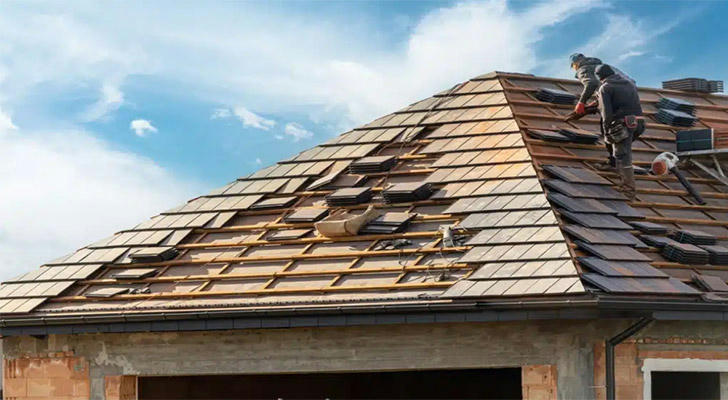Different Government Grants To Help You Pay For Roof Replacement
Replacing a roof is a significant expense for homeowners, especially during economically challenging times. An old or damaged roof not only affects the appearance and value of a home but can also lead to safety hazards and other maintenance issues. For many low-income families, the cost of roof replacement can become a huge challenge. Fortunately, various resources and government assistance programs across the United States can help these families cope with the high costs of roof replacement. This article will explore how to obtain low-cost or free roof replacements in the U.S. and provide a successful case study to ensure the authenticity of the information.

1. Government Assistance Programs
Many state and local governments provide funding for roof replacement, especially for low-income families. These grants usually come in the form of subsidies or low-interest loans, aiming to reduce the financial burden on homeowners.
Federal Housing Administration (FHA) Loans: The FHA’s “203(k)” loan is an attractive option that allows homeowners to include the costs of roof replacement in their mortgage when purchasing or renovating a home. This means homeowners don’t have to pay the entire amount upfront but can gradually repay the loan according to their financial situation. This program is beneficial not only for first-time homebuyers but also for existing homeowners looking to renovate.
U.S. Department of Agriculture (USDA): The USDA specifically provides housing repair loans and grants for low-income families living in rural areas. These funds can be used for roof replacement as well as other necessary home repairs. USDA loan interest rates are usually low, and the repayment terms are flexible, making it a suitable option for families with limited financial resources.
These government assistance programs provide invaluable help to those who urgently need roof replacements but are facing economic pressure. The application process for these funds may require some preparation, including filling out application forms and providing proof of income and reports on the condition of the home. However, once successfully applied, homeowners can significantly alleviate their financial burdens.
2. Nonprofit Organization Support
In addition to government funding, many nonprofit organizations actively assist low-income families in improving their housing conditions. For instance, Habitat for Humanity is dedicated to providing housing support to families in need. They help with necessary repair work, including roof replacements, through volunteer teams and donations.
- Habitat for Humanity: This organization is well-known for its volunteer teams, which provide labor support when funds are limited. This means that families who have applied for government funding can effectively reduce labor costs, thus lowering overall repair expenses.
Additionally, other nonprofit organizations also offer similar support services. Families can contact local nonprofits to learn about available resources and assistance programs to help them complete roof replacements.
3. Energy Efficiency and Weatherization Programs
Some state governments encourage families to make energy-efficient upgrades and provide related subsidies and loans. For example, many states offer energy efficiency grants that support the installation of energy-efficient roofs or materials. These energy-saving measures can not only reduce household energy expenses but also increase the market value of the home.
- Energy Efficiency Grants: Many state energy departments provide grants for roof replacements that use energy-efficient materials. Homeowners can visit their local energy department's website for more detailed information and to check if they qualify for these programs. Choosing energy-efficient roofing not only helps save on energy costs but also improves the comfort of the living environment.
4. Community Service and Volunteer Projects
In addition to support from the government and nonprofit organizations, many community groups and churches offer volunteer services for roof repairs and replacements. These organizations typically consist of enthusiastic community members dedicated to assisting families facing financial difficulties.
Families can reach out to these organizations to inquire about available resources and support programs. Sometimes, these volunteer projects not only provide tangible help but also foster collaboration and support within the neighborhood.

5. Case Study: A Success Story from Missouri
In Missouri, a retired teacher named Mary faced a roof damage issue. Due to her limited income, her home was severely damaged after a storm and urgently needed a roof replacement. She tried to find a suitable solution but felt helpless due to a lack of funds.
By chance, Mary consulted a local community service organization and learned that she qualified for a housing repair loan offered by the USDA, specifically aimed at low-income families. She submitted her application and provided proof of income and a report on the condition of her home. A few weeks later, Mary received notification that her loan was approved, which was a great relief.
At the same time, Mary contacted the volunteer team from Habitat for Humanity. After inspecting her roof, the team confirmed that it indeed needed to be replaced. Understanding Mary’s financial situation, they decided to provide volunteer services to help her with the roof replacement.
By combining these two resources, Mary successfully replaced her roof at a very low cost, addressing safety hazards and improving the energy efficiency of her home, thus saving on future repair costs. This success story illustrates the importance of actively seeking resources and assistance.
6. Contacting Roofing Contractors
When considering a roof replacement, homeowners should proactively contact several companies to obtain quotes and inquire about promotional offers or installment payment plans. Many roofing contractors may offer various payment options to suit different customer needs. By comparing quotes and services from multiple contractors, homeowners can find the best value for their investment.
Conclusion
Obtaining low-cost or free roof replacements in the United States is indeed possible. By understanding the available government grants, nonprofit assistance, community services, and contractor offers, homeowners can effectively reduce the costs of roof replacement. Success stories like Mary’s demonstrate that actively seeking resources and help can lead to substantial improvements and security for families. If you find yourself in a similar situation, consider exploring the above suggestions to find a suitable solution for your needs. By leveraging these resources, you can ensure the safety and comfort of your home at a lower cost.
